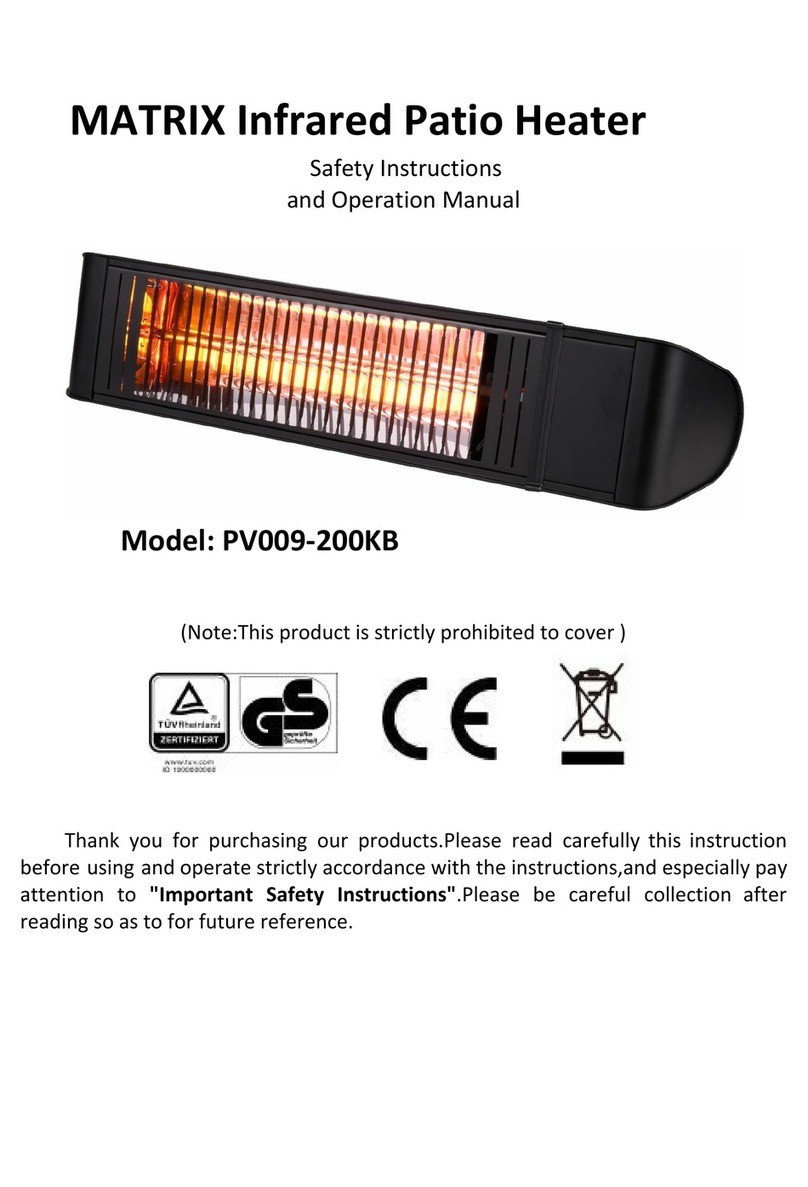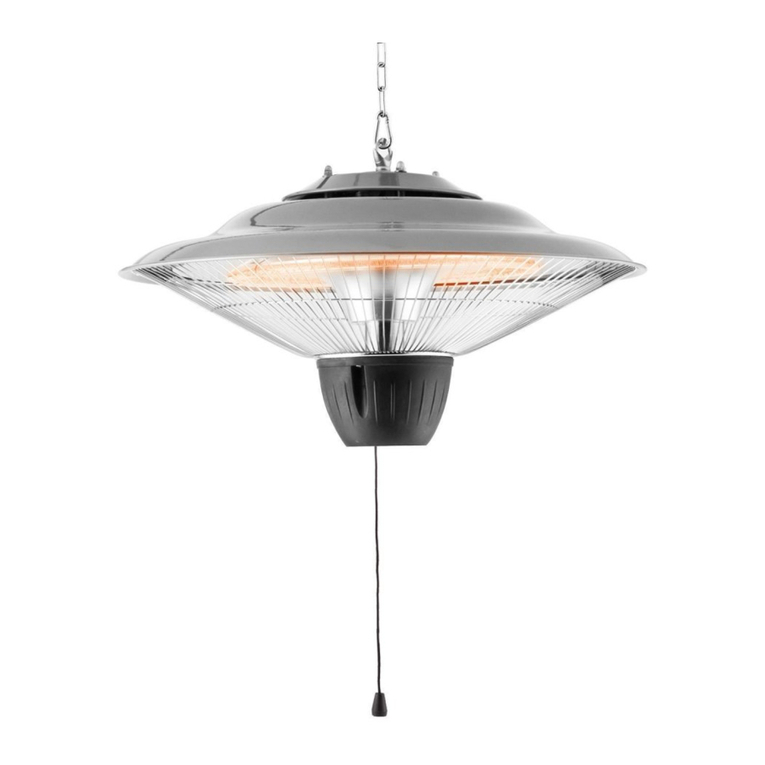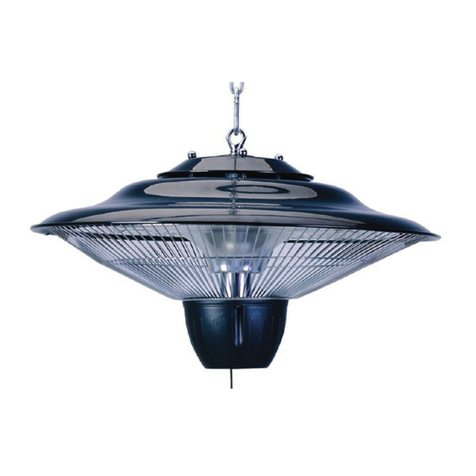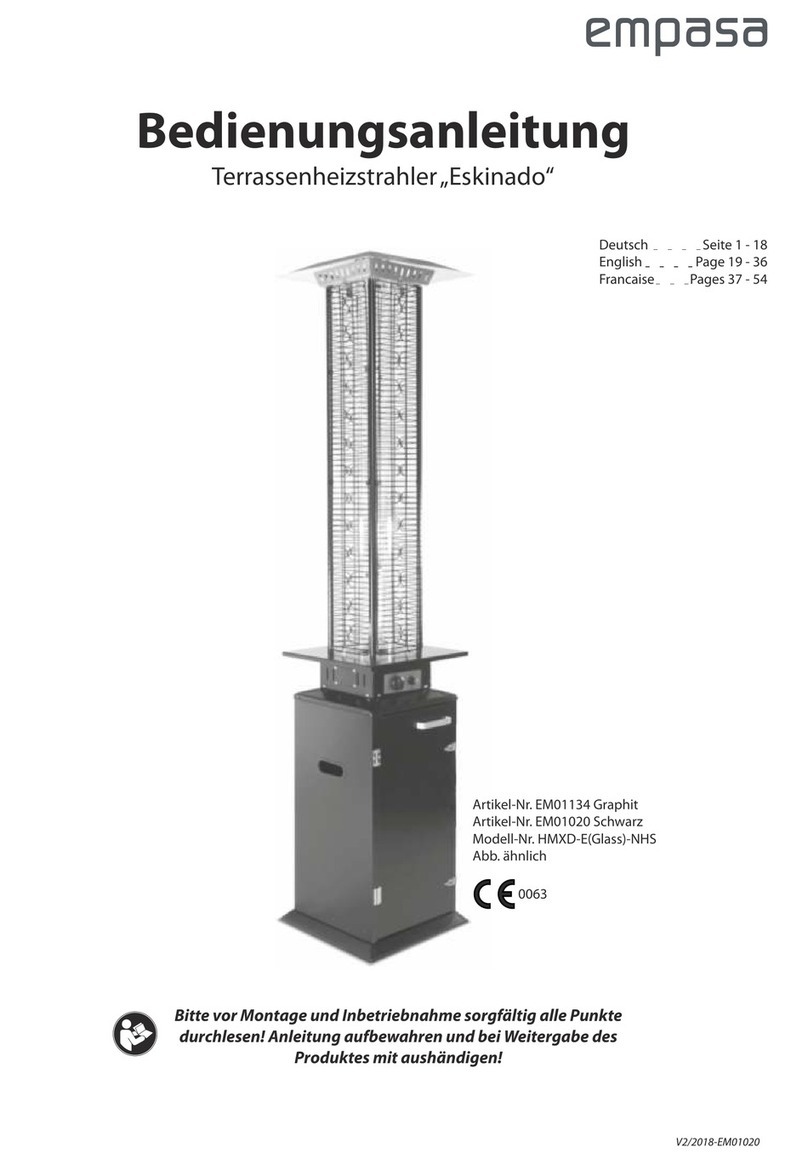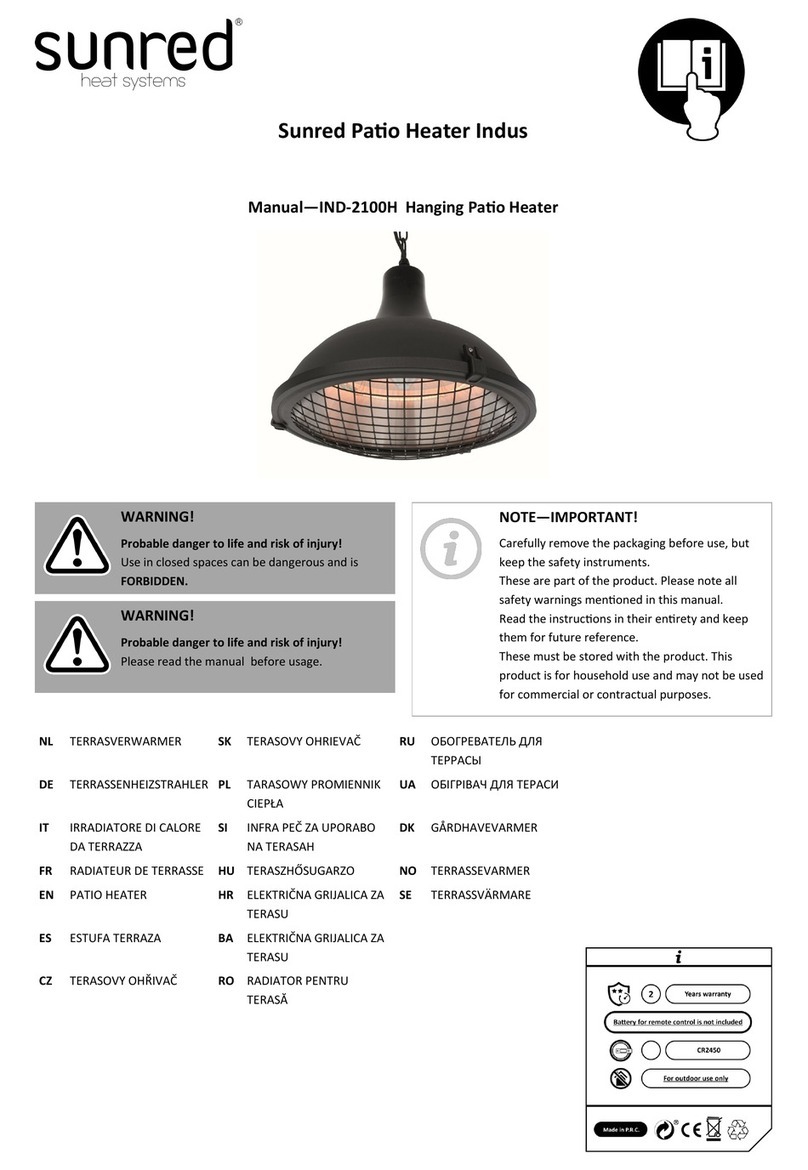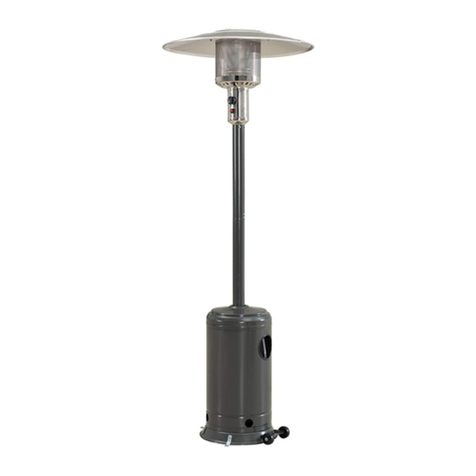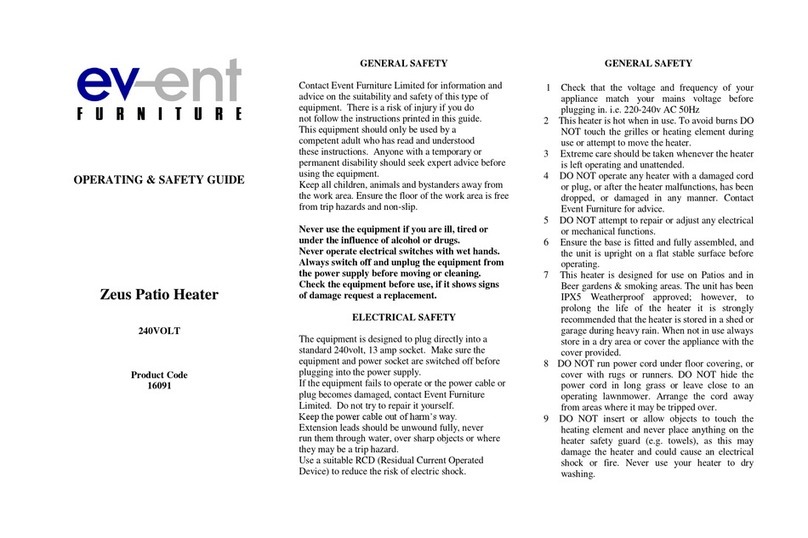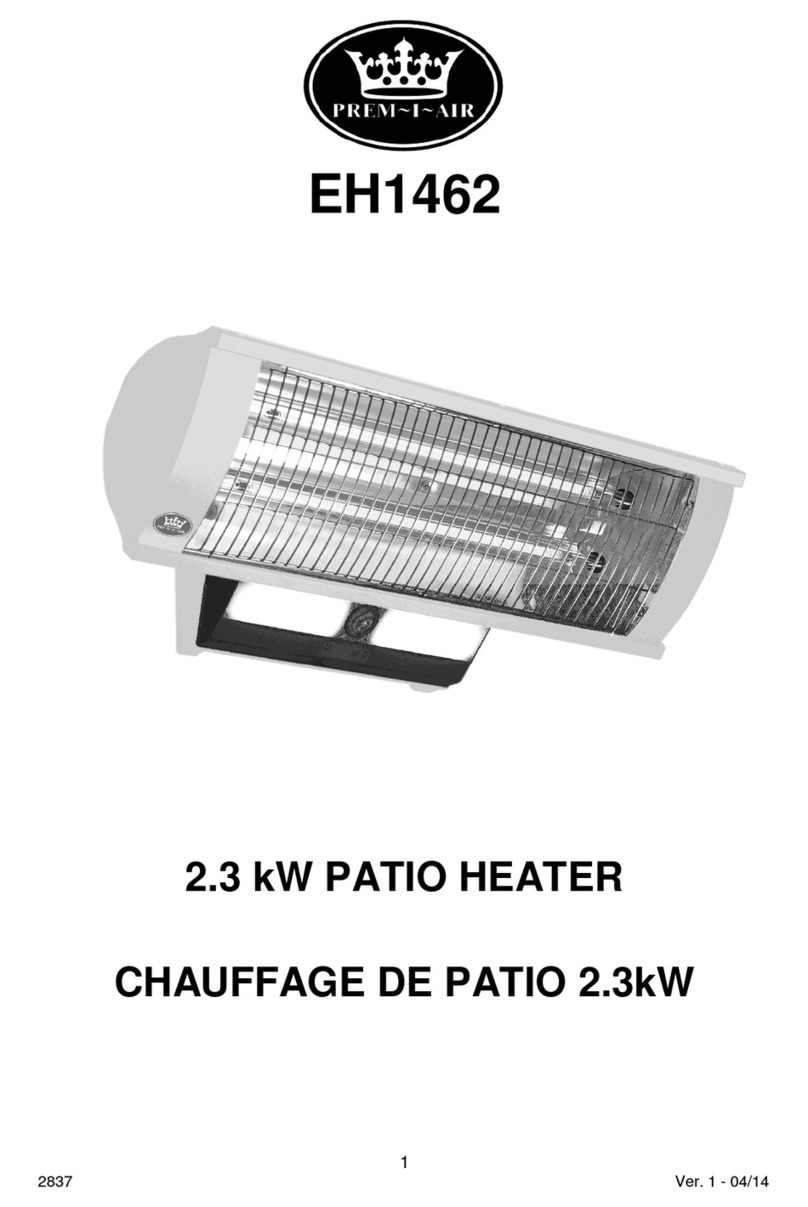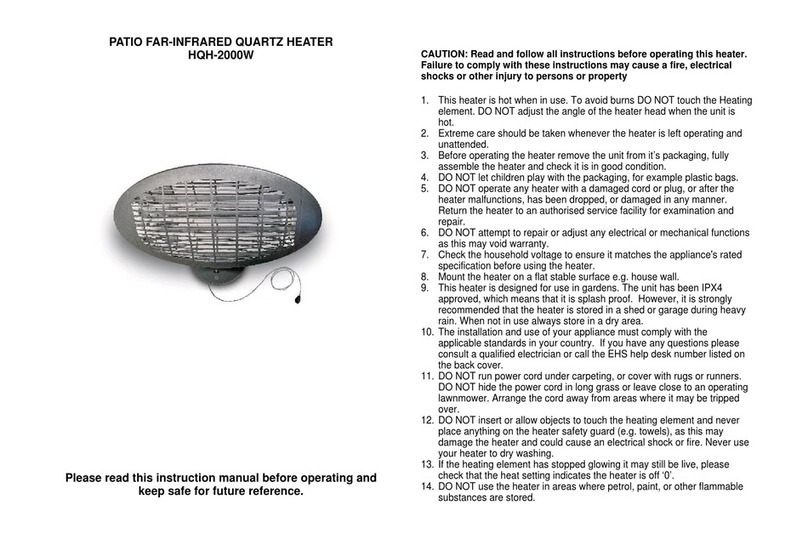
3
W12VA
2 Hinweise zur Sicherheit
Beachten Sie bitte auch die Richtlinien für den Umgang mit Flüssiggas, die Sie an jeder Verkaufsstelle
erhalten.
• Dieser Heizstrahler darf nicht in geschlossenen Räumen verwendet werden!
• Das Gerät ist auf einerfesten, ebenenund stabilenUnterlage windgeschützt aufzustellen und bei
Bedarf mit Schrauben an vorgesehener Stelle zu befestigen.
Die Gasentnahme darf nur bei stehender Flasche erfolgen.
• Während des Betriebes muss ein sicherer Abstand von 2m vom Gerät zu brennbaren Materialien und
Stoffen eingehalten werden.
• Das Gerät ist nicht unbeaufsichtigt während des Betriebes zu lassen.
• Der Niederdruck-Gasanschlussschlauch ist vor möglichen Beschädigungen zu schützen und muss
regelmäȕig kontrolliert werden. Es ist darauf zu achten, dass der Schlauch nicht geknickt wird.
Beschädigte oder poröse Schläuche sind auszuwechseln.
• Während des Betriebes darf das Gerät nicht zu einem anderen Standort bewegt bzw. transportiert werden.
• Reparaturen und Wartungen am gastechnischen Teil des Gerätes dürfen nur von hierfür autorisiertem
Fachpersonal durchgeführt werden.
Das Gerät muss in regelmäȕigen Abständen, hier 2 Jahre, von Sachkundigen untersucht und gewartet
werden.
• Auȕerbetriebnahme bei Störungen: das Absperrventil der Gasflasche ist nach Gebrauch oder im Falle
einer Störung sofort zu schlieȕen.
• Inbetriebnahme nach Störungen: Der Heizstrahler darf nur nach Behebung der Störung wieder in Betrieb
genommen werden.
• Der Brenner, vor allem die Lufteintrittsöffnungen, ist von Verschmutzungen freizuhalten.
• Die Dichtheit der Anlage ist möglichst oft und nach jeder Neuaufstellung zu kontrollieren.
Siehe Abschnitt: Dichtheitsprüfung.
• Im Freien aufgestellte Flaschen müssen gegen den Zugriff Unbefugter gesichert sein. Hierzu ist die
vorgesehene Sicherung der Haube des Flaschenraumes abzusichern.
• Bewahren Sie die Flüssiggasflasche niemals unter Erdgleiche oder an unbelüfteten Plätzen auf (siehe
„Vorschriften und Hinweise zur Sicherheit“).
• Die Flüssiggasflasche ist vor Wärmeeinwirkung (starke Sonnenbestrahlung) zu schützen.
• Die Aufstellung von Flüssiggasflaschen ist nicht zulässig in Fluren, unter Erdgleiche, in Treppenräumen,
in Durchgängen und Durchfahrten von Gebäuden, sowie in ihrer unmittelbaren Nähe. Flüssiggasflaschen,
auch leere, sind stehend aufzubewahren. Die Ventile müssen mit Ventilschutzkappen und
Verschlussmuttern versehen werden.
2.1 Rechtsverordnungen, technische Regeln und Richtlinien
Bei der Aufstellung sind folgende Vorschriften zu beachten:
• TRF „Technische Regeln Flüssiggas“,
Bezug: BGW, Wirtschafts- und Verlagsgesellschaft Gas und Wasser GmbH, Wirmer-Straȕe 1-3,
5300 Bonn 1,
• Einschlägige Unfallverhütungsvorschriften (VBG 21 usw.)
Bezug: beispielsweise Carl Heymanns Verlag KG,
Gereonstr. 18-32, 5000 Köln 1,
• „Richtlinien für die Verwendung von Flüssiggas“,
Bezug: beispielsweise Carl Heymanns Verlag KG,
Gereonstr. 18-32, 5000 Köln 1,


